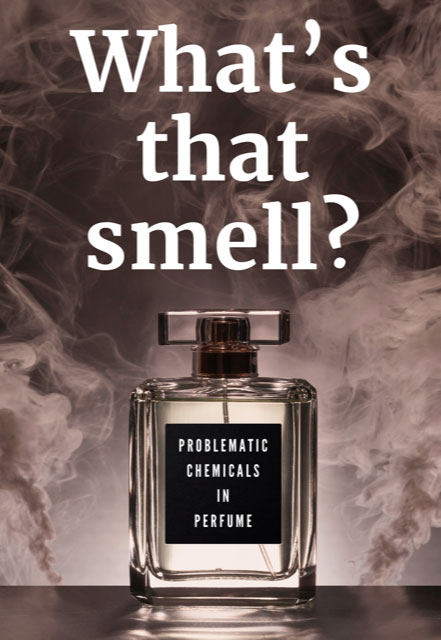Perfumes frequently sold in the Netherlands, Belgium and Denmark often contain problematic chemicals. This is the conclusion of a new study conducted by the Danish Consumer Council, the Flemish organisation Kom Op Tegen Kanker (Stand up to Cancer) and the Dutch organisation Tegengif (Erase all Toxins).
The report, titled ‘What’s that smell: problematic chemicals in perfume’, points out that the current regulatory framework in the EU is unfit to protect consumers from exposure to problematic chemicals in perfumes and fragranced personal care products. The organisations therefore provide practical tips for vulnerable groups to help them reduce their exposure.
For this study, the groups involved selected 20 perfumes based on popularity in Belgium, Denmark and the Netherlands, and compared the labels with substances of concern listed by several authoritative bodies, such as the European Commission and the Danish government.
A total of 26 problematic chemicals were found in the selected perfumes, including suspected endocrine disruptors, allergens, a reprotoxic substance and chemicals that are problematic for the environment. Only two perfumes contained no suspected endocrine disrupting chemicals. The rest all contained one or more suspected EDCs.

Harmful substances
The substance ethylhexyl methoxycinnamate was found in several perfumes. This substance is one of the most widely used UV filters in cosmetics because it extends the shelf life of a product. The substance is a suspected endocrine disruptor and is difficult to break down in the environment. For this reason, it can be found in drinking water worldwide.
The fragrance substance butylphenyl methylpropional was found in one perfume. “The substance is classified as toxic to reproduction. Reprotoxic substances can have a negative effect on sexual function and fertility in both men and women,” says Annelies den Boer, president of Tegengif-Erase all Toxins. “Fortunately, as of 1 March 2022, there is a ban on the use of this substance in cosmetics on the European market. Unfortunately, however, this does not apply to the other chemicals we found.”
Exposure of vulnerable groups
The groups are concerned about the cumulative exposure of vulnerable groups, such as pregnant women, to problematic chemicals in personal care products and perfume. International studies indicate that some women use 12 to 16 personal care products in a single day. This exposes them to a cocktail of different chemicals daily, such as suspected endocrine disruptors.
Breast cancer
“Chronic exposure to even low doses of endocrine disruptors can contribute to certain breast cancers,” says Ann Gils, director of prevention and early detection at Kom Op Tegen Kanker (Stand up to Cancer). “It is therefore crucial to reduce exposure to known and suspected endocrine disruptors. Using personal care products that do not contain these chemicals can be helpful."
The EU acknowledges risks
In its Chemicals Strategy for Sustainability, the European Commission mentions that consumers are widely exposed to chemicals present in products such as cosmetics, food contact materials, furniture and textiles. The Commission acknowledges that foetal exposure to endocrine disrupting chemicals may lead to irreversible health effects and that the regulatory system needs to be improved to ensure that endocrine disruptors are recognised in a timely manner and that human and environmental exposure is minimised.
“We welcome this recognition,” says Annelies den Boer. “Still, it may take years before this actually leads to better protection of consumers. Until then, they will continue to be exposed to hazardous substances on a daily basis. That’s why we think it’s important to make consumers aware of this exposure and to point out alternatives. There are plenty of consumer products available that do not contain harmful chemicals. Ecological labels, such as the EU Ecolabel or the Nordic Swan Ecolabel, can help consumers make a toxin-free choice.”
“Perfume contains unwanted chemicals and some cannot be avoided if you want the fragrance,” comments Claus Jørgensen, head of the Forbrugerrådet Tænk project. “But our tests show that it is possible to make Eau de parfum without suspected endocrine disrupters. I therefore urge the EU to ban these chemicals and the big cosmetic companies to stop using them until a ban is in place.”
.png)